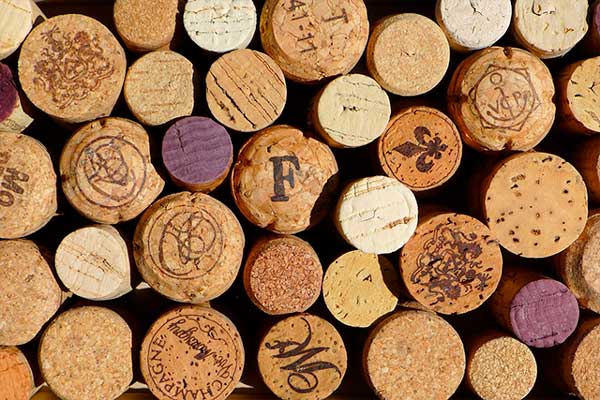What is Brass metal?
A highly corrosion-resistant alloy with a golden appearance. It is extremely malleable and has excellent thermal and electrical conduction properties.
This versatile material can be easily worked, offering a wide variety of design and decoration options.
What metal is in brass? It is a copper and zinc alloy whose origins date back to ancient civilizations like the Egyptian, Greek, and Roman. Generally, it is mostly composed of 60% copper and 40% zinc.
Brass material is obtained through the melting and combination of copper and zinc in specific proportions, which vary depending on the desired characteristics of the material. However, its composition can influence its physical properties; that is, the relative amount of copper and zinc used in its manufacture can lead to different characteristics.
What is Brass Used For?
Brass is an extremely ductile and resilient material applied in a wide range of products and structures. Thanks to its unique properties like strength and flexibility, this element is used in various industries to create a variety of functional and aesthetic products. Its versatility makes it a popular choice for multiple applications in different fields.
Manufacturing Industry
It is employed in the production of a wide range of products like valves, hydraulic fittings, electronic components, and tools.
Its ductility and workability make it a versatile material for manufacturing precise pieces.
Construction and Architecture
Used in architectural applications such as railings, handrails, decorations, lamps, and faucets.
Its elegant design, resistance to corrosion, and durability make it suitable for both indoor and outdoor use.
Automotive Industry
Brass mechanical properties. An essential part in producing components and accessories for cars like radiators, electrical terminals, and engine parts.
Its strength, electrical conductivity, and affordable price make it the preferred choice for the automotive industry.
Jewelry and Decorative Items
Highly popular in creating jewelry, decorations, and decorative objects due to its golden color and easy malleability into various shapes.
It is common to find bracelets, necklaces, earrings, and brass figurines.
As we've seen, this is a material that can be used in various ways and in many products. In our catalog, you can find customized pens and bags with brass finishes that can be personalized using different techniques. We will further explore this later.
Most Relevant Brass Properties and uses
Brass material is highly valued for its multiple properties. With its brightness and ease of work, it is a popular choice in producing various products. Its versatility allows it to be easily deformed, cut, and welded, adapting to different needs.
One of the main characteristics of brass is its high recyclability, making it a sustainable and environmentally friendly choice. Additionally, its resistance to extreme temperatures and light ensures its durability in various environments.
This material is characterized by its resistance to wear and its excellent thermal and electrical conductivity. These properties make it ideal for use in the maritime industry, where it must withstand extreme conditions like high salinity.
Finally, its corrosion resistance makes it an important material in producing safe containers for handling flammable compounds. In summary, brass is appreciated for its charm, ease of use, and a wide range of uses in different sectors.
What are the Advantages of Using Brass Alloy?
Brass is an alloy with many properties, and it's evident that it has many applications. Therefore, it's appropriate to highlight the advantages of its use. Many of its characteristics are also the benefits it can offer. The most important ones:
- Flexibility in both cold and hot conditions.
- Does not rust with water.
- Regardless of extreme temperatures or exposure to light, brass remains unchanged.
- Resistance to corrosion.
- One of its advantages is that, like other metals, brass is highly recyclable, contributing to environmental care.
Types of Brass Based on Composition
As mentioned earlier, depending on the amount of copper and zinc used, brass will have different properties.
There are many types of brass that can be used for the production of various products. Based on the zinc composition, we distinguish three main brass groups:
First-grade brass, with a zinc percentage below 35%
Copper and zinc alloys that offer a combination of strength and malleability. These brasses are widely used in a variety of applications, such as electrical components or machine parts.
Second-grade brass, with a zinc percentage between 33 and 44%
Copper and zinc alloys that provide higher mechanical and corrosion resistance. These brasses are commonly used in fields requiring greater strength, such as manufacturing components for automotive industries and marine equipment.
Third-grade brass, with a zinc percentage higher than 44%
These are copper and zinc alloys with limited industrial uses, as they tend to be more brittle and less malleable due to higher zinc content. These brasses have more specific properties and are used for more specialized productions, such as musical instruments, jewelry, and decorations.
Products made in brass metal alloy
Brass is a versatile material used in a wide range of products across various industries. Its brightness and golden color add elegance and distinction to products made with this material, making them attractive and memorable. From personalized keychains to pens and bottle openers, brass offers a wide range of options for promotional gifts.
Additionally, brass is used for jewelry and decorative elements. From ornamental figures to personalized bracelets and necklaces, it offers a sophisticated and unique appearance that complements any style. Its flexibility allows for the creation of detailed and refined designs, adding beauty and distinctiveness.
Beyond its aesthetic appeal, this copper and zinc alloy is durable and resistant, ensuring the longevity of promotional gifts. Its ability to withstand wear and corrosion makes them high-quality gifts that can endure over time.
Some brass-made products include:
What are the Best Customization Techniques?
There are several marking techniques that can be used on brass, depending on the application and desired result. Here are some of the most common techniques:
Laser Engraving
It's the best option for brass, as it yields durable relief on the surface and isn't excessively costly.
However, the outcome may vary depending on the material, for instance, between wooden keychains or metal pens.
Screen Printing
Printing method using a mesh frame to transfer ink onto brass.
It's a versatile technique, allowing for printing complex and detailed designs in various shapes and sizes.
Pad Printing
Printing process transferring ink from an etched plate to a surface using a silicone pad.
It's particularly suitable for printing on irregular or curved surfaces like brass.
Heat Embossing
It's a highly effective marking technique for brass.
It uses heat to transfer the design onto the material, creating a durable and high-quality mark.
Differences between Brass and Bronze
Often, brass is compared to bronze, as both are alloys primarily composed of copper. However, bronze and brass are two materials that present many differences and must be properly distinguished.
Brass
To obtain brass, it's necessary to expose copper to low melting temperatures.
It's malleable and can be easily worked without breaking.
Malleable material with acoustic properties, ideal for producing musical instruments.
Shiny and golden finish.
Bronze
To obtain bronze, it's necessary to expose copper to very high melting temperatures.
Low malleability, breaks easily.
Hard and resilient material.
Finish generally tends toward orange.
In conclusion, although brass and bronze share copper as the primary component, they present significant differences, especially in their transformation process.
Bronze is fragile and more prone to breakage, whereas brass is malleable and less expensive, as zinc is a more common and cheaper metal compared to tin.
Does Brass Oxidize? Maintenance and Care:
Practical Tips to Keep It in Good Condition and How to Clean brass oxidation
It's not advisable to place any type of metallic material in the microwave, whether aluminum foil or any other type of container.
Though recent studies conducted by the European Aluminum Foil Association (EAFA) have stated that it is possible to heat aluminum containers in the microwave provided they are post-1983 and following proper instructions.

Regular Cleaning
Clean regularly using a soft, non-abrasive cloth. Avoid using harsh chemicals that could damage the finish. A mild solution of water and neutral soap can be used to remove dirt and dust.

Avoid Moisture
It is susceptible to oxidation, so it's important to keep it dry at all times. Avoid exposure to moisture, especially direct contact with water. After cleaning, thoroughly dry to prevent stains or marks.

Protective Varnish
To maintain brass's shine for longer, a protective metal varnish can be applied. This coating creates a protective layer that helps prevent oxidation and dulling of brass.

Avoid Contact with Chemicals
Avoid exposure to aggressive chemical products, such as abrasive cleaners, bleach, or ammonia. These products can damage the surface and cause discoloration or corrosion.

Proper Storage
Clean and thoroughly dry before storing. Use soft cloths to wrap them and prevent scratching against other objects. Store in a moisture-free place to avoid oxidation.

Regular Maintenance
Regularly perform maintenance on products made of this material to detect any signs of corrosion or dullness. For stains or damaged areas, specific products can be used to polish and restore its original shine.
By following these care and maintenance tips, you can enjoy the beauty and durability of brass for a long time. It's important to remember that each item may have specific requirements, so it's essential to consult the manufacturer's recommendations before applying any treatment or cleaning.
Conclusion
Brass is an exceptionally versatile material that has played a significant role throughout history. With its copper and zinc composition, it showcases a wide range of properties and advantages that make it a popular choice across various industries.
From ancient times to modern production, it has demonstrated its durability and elegant design. Its malleability and toughness allow for easy manipulation into different shapes and designs, both decorative and functional.
Among its technical qualities, brass is an electrical and thermal conductor, making it valuable for composing certain materials. Its resistance to corrosion and oxidation ensures long life and reduced maintenance.
Additionally, brass has a bright and golden appearance, offering further aesthetic advantages. Its historical legacy, strength, and unique characteristics make it a reliable and appealing choice for those seeking quality and versatility.




